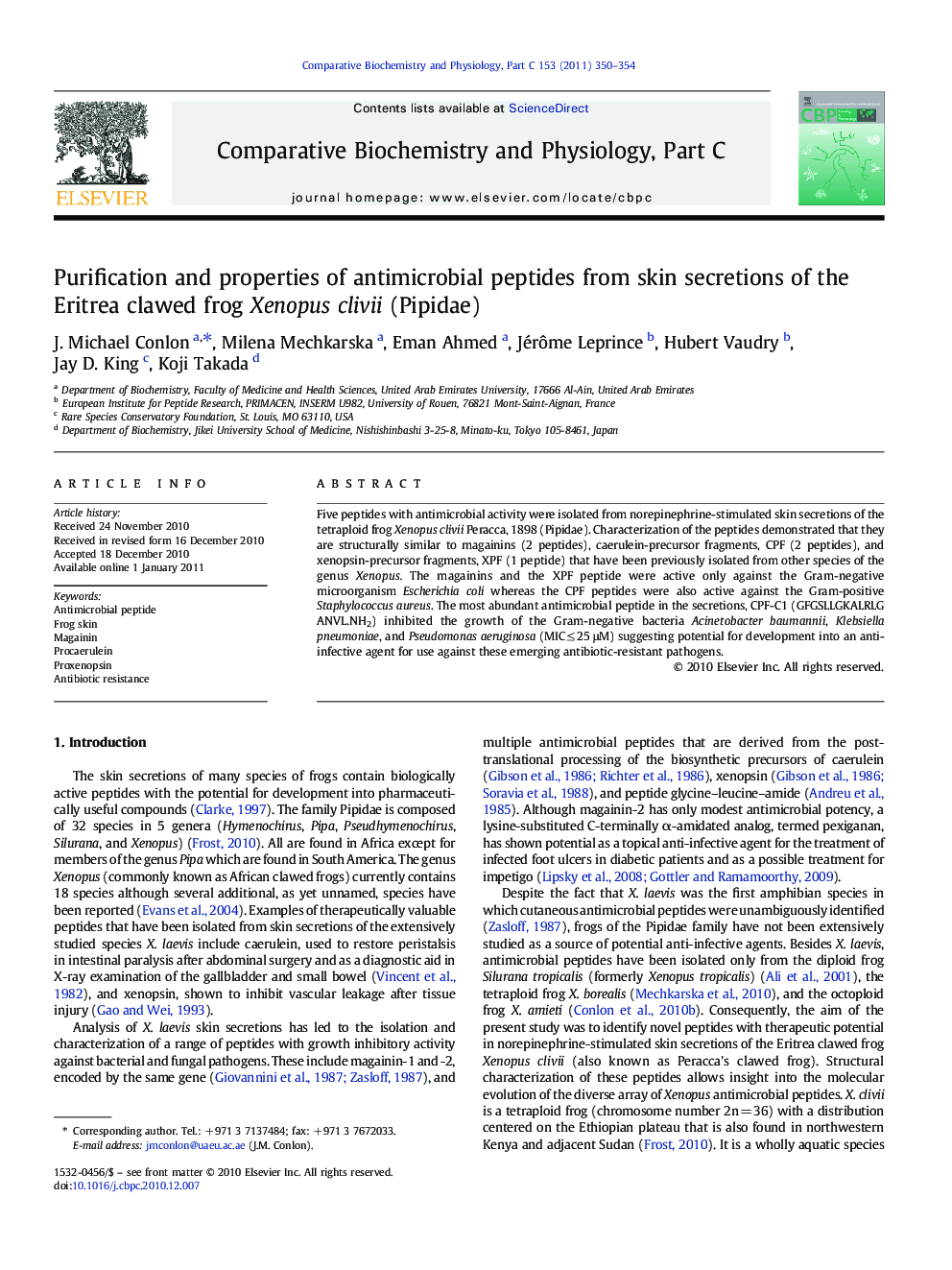| Article ID | Journal | Published Year | Pages | File Type |
|---|---|---|---|---|
| 1977559 | Comparative Biochemistry and Physiology Part C: Toxicology & Pharmacology | 2011 | 5 Pages |
Five peptides with antimicrobial activity were isolated from norepinephrine-stimulated skin secretions of the tetraploid frog Xenopus clivii Peracca, 1898 (Pipidae). Characterization of the peptides demonstrated that they are structurally similar to magainins (2 peptides), caerulein-precursor fragments, CPF (2 peptides), and xenopsin-precursor fragments, XPF (1 peptide) that have been previously isolated from other species of the genus Xenopus. The magainins and the XPF peptide were active only against the Gram-negative microorganism Escherichia coli whereas the CPF peptides were also active against the Gram-positive Staphylococcus aureus. The most abundant antimicrobial peptide in the secretions, CPF-C1 (GFGSLLGKALRLG ANVL.NH2) inhibited the growth of the Gram-negative bacteria Acinetobacter baumannii, Klebsiella pneumoniae, and Pseudomonas aeruginosa (MIC ≤ 25 μM) suggesting potential for development into an anti-infective agent for use against these emerging antibiotic-resistant pathogens.
